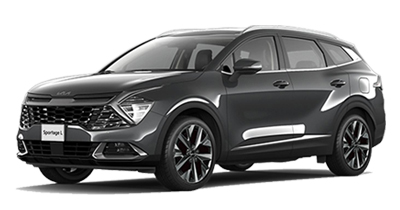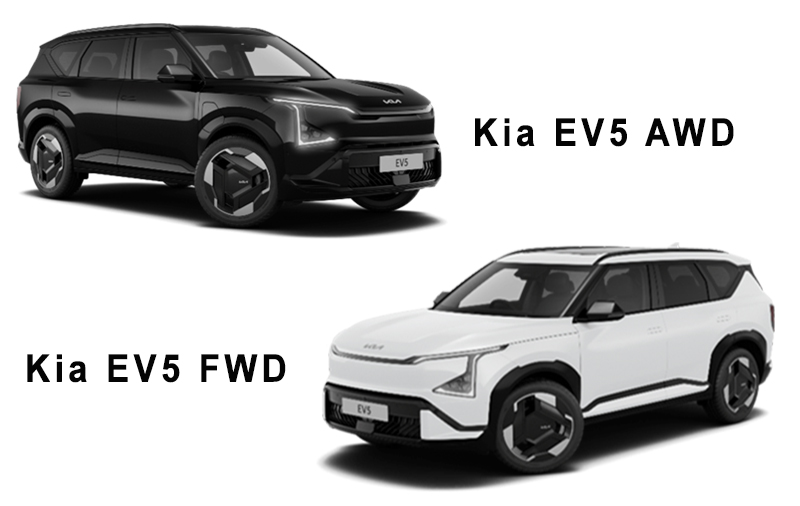As the world moves towards sustainable transportation, car buyers often face a crucial question: HEV, PHEV, or EV – which is the right choice? Understanding the differences between these vehicle types is essential to making an informed decision. This guide will explain HEV (Hybrid Electric Vehicle), PHEV (Plug-in Hybrid Electric Vehicle), and EV (Electric Vehicle), their pros and cons, and which one might suit your needs best.
What is an HEV (Hybrid Electric Vehicle)?
A Hybrid Electric Vehicle (HEV) combines a traditional internal combustion engine (ICE) with an electric motor. Unlike Plug-in Hybrid Electric Vehicles (PHEVs), HEVs do not require external charging. Instead, the battery charges itself through regenerative braking and the engine.
Pros of HEVs:
- Better fuel efficiency than conventional gasoline vehicles.
- No need for charging stations, making them ideal for areas with limited charging infrastructure.
- Lower emissions than traditional gasoline cars.
- Generally more affordable than PHEVs and EVs.
 Cons of HEVs:
Cons of HEVs:
- Cannot run solely on electric power for long distances.
- Less fuel-efficient compared to PHEVs when charged properly.
Popular HEVs:
One of the best HEV options available is the Kia Sportage HEV, offering a balance between performance and fuel efficiency.
What is a PHEV (Plug-in Hybrid Electric Vehicle)?
A Plug-in Hybrid Electric Vehicle (PHEV) is similar to an HEV but has a larger battery and can be charged via an external power source. This allows it to run longer on electric power alone before switching to gasoline.
Pros of PHEVs:
- Extended electric driving range, reducing fuel consumption.
- Lower emissions than HEVs and gasoline-powered vehicles.
- Can be driven as a full-electric vehicle for short commutes.
- More fuel-efficient than HEVs when charged regularly.
Cons of PHEVs:
- Requires charging infrastructure for optimal efficiency.
- Higher upfront cost compared to HEVs.
- Heavier weight due to a larger battery.
What is an EV (Electric Vehicle)?
An Electric Vehicle (EV) is entirely powered by electricity and has no internal combustion engine. EVs need to be charged via a home charger or public charging station and produce zero emissions.
Pros of EVs:
- Zero emissions, making them environmentally friendly.
- Lower running costs as electricity is cheaper than gasoline.
- Instant torque provides a smooth and powerful driving experience.
- Low maintenance costs due to fewer moving parts.
 Cons of EVs:
Cons of EVs:
- Limited charging infrastructure in some regions.
- Higher upfront cost than HEVs and PHEVs.
- Range anxiety – EVs have a limited driving range before requiring a recharge.
Popular EVs:
The Kia EV5 FWD is an excellent choice for those looking for a fully electric vehicle with great performance and range.
HEV vs PHEV vs EV: Which One is Better?
| Feature | HEV | PHEV | EV |
|---|---|---|---|
| Charging Required? | No | Yes | Yes |
| Electric-Only Range | Very limited | Moderate | High |
| Fuel Efficiency | Moderate | High | Full electric |
| Maintenance Costs | Low | Moderate | Very low |
| Environmental Impact | Lower than gasoline cars | Lower than HEVs | Zero emissions |
| Ideal For | Areas with no charging stations | Those with access to charging but need a backup engine | Those with reliable charging infrastructure |
FAQs: Answering Common Questions
What is the difference between EV, PHEV, and HEV?
- EV: Fully electric, no gasoline engine.
- PHEV: Can run on electric power but has a gasoline backup engine.
- HEV: Uses both gasoline and electric power but does not need external charging.

Which is better, EV or HEV?
If you have reliable charging infrastructure, an EV is the best choice for environmental impact and running costs. However, if charging is an issue, an HEV is a better option.
What is the difference between e-HEV and Hybrid?
- e-HEV refers to electric hybrids where the electric motor is the primary power source and the engine supports charging.
- Hybrid (HEV) switches between engine and battery power as needed.
Is PHEV fully electric?
No, a PHEV has an electric motor and a gasoline engine. It can run on electric power for short distances but requires gasoline for longer trips.
What are the charging options for PHEVs and EVs?
Both PHEVs and EVs can be charged at home using a standard outlet or a dedicated charging station.
What are the cost differences between HEV, PHEV, and EV?
- HEVs are typically the most affordable.
- PHEVs are more expensive but offer better fuel efficiency.
- EVs have the highest upfront cost but lower long-term expenses.
Conclusion: Choosing the Right Vehicle for You
The choice between HEV, PHEV, and EV depends on your needs and infrastructure availability. If you want to reduce fuel consumption without charging, an HEV like the Kia Sportage HEV is a great option. For those who can charge regularly but need gasoline backup, a PHEV is ideal. If you’re ready for full electrification, an EV like the Kia EV5 FWD is the best choice.
For more details on vehicle options, pricing, and protection services, check out these resources:
- Price List
- 3M Glass Coating Protection
- Undercoating Car Protection
- Book a Service Appointment
- Inquire Online













